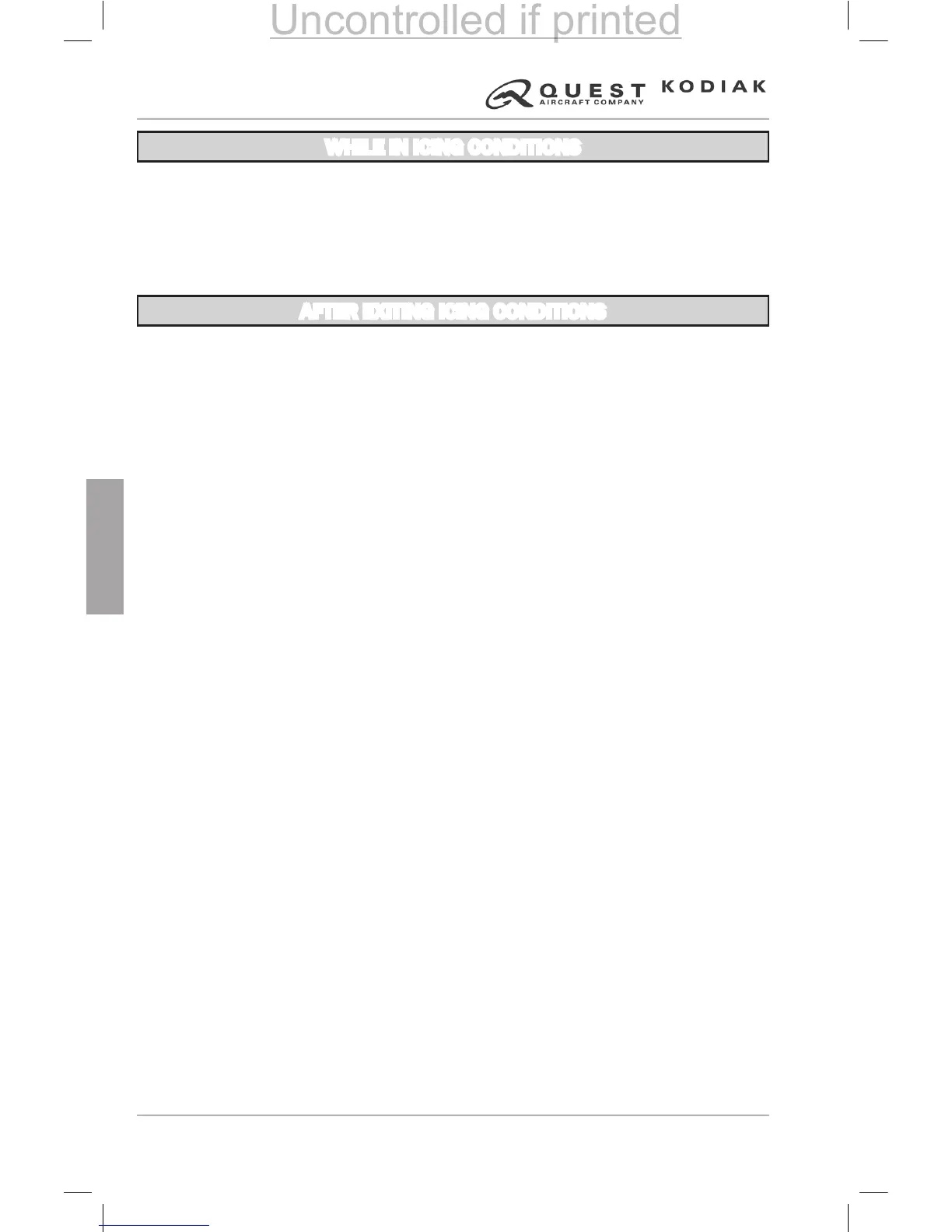WHILE IN ICING CONDITIONS
1. Flaps .............................................................0°, maintain 110 KIAS minimum
2. ICE LIGHT Switch
.................................................................. AS REQUIRED
3. ECS
.................................INCREASE SET TEMP TO ABOVE CABIN TEMP
4. Defrost
........................................................................................SELECT ON
5. Ice Protection Fluid Quantity.......................................................... MONITOR
(Ensure adequate quantity to complete ight.)
AFTER EXITING ICING CONDITIONS
1. SURFACE/PROP Switch .........................................................................OFF
2. Airspeed................................................ AS FLIGHT CONDITIONS DICTATE
3. ICE LIGHT Switch
.................................................................. AS REQUIRED
4. Bleed Air Heat
........................................................................ AS REQUIRED
5. Defrost
................................................................................... AS REQUIRED
6. ENG INLET Switch
.......................................................... LEAVE IN BYPASS
7. WINDSHIELD Switch
.................... ON as required, to remove windshield ice
AUTOPILOT
During icing conditions in cruise, increase engine power (up to maximum
continuous power) to maintain cruise speed as ice accumulates on the
unprotected areas and causes the aircraft to slow down.
The autopilot may be used in icing conditions within the icing envelope
dened in 14 CFR 25 Appendix C (for IAC AR certied airplanes, IAC AR
Aviation Regulations Part 25, Appendix C). However, every 30 minutes the
autopilot should be disconnected to detect any out-of-trim conditions caused
by ice buildup. If signicant out-of-trim or other anomalous conditions are
detected, the autopilot shall remain off for the remainder of the ight.
When disconnecting the autopilot with ice accretions on the airplane, the pilot
should be alert for out-of-trim control forces.

